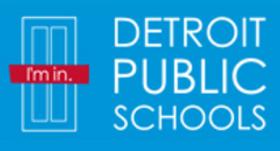Michigan has developed a new plan for revamping failing schools by introducing the Education Achievement Authority, a special district slotted specifically for the lowest performing schools in the state. Most educators agree that the new system is effective and necessary for bringing the state’s public school system up to par. However, some are concerned the organization may be overstepping its bounds as it begins to expand the number of schools it serves.
What is the Education Achievement Authority?
According to the Detroit Public Schools website, the Education Achievement Authority (also referred to as the EAA) is a statewide school district for the lowest performing schools in Michigan. The new district takes the schools in the bottom five percent statewide and works to transform them into viable, financially-responsible schools. Once they have achieved this status, the schools can then decide if they want to return to their original school district or remain in the EAA.
The new district functions very differently from the other school districts in Michigan. The administration and staff at each individual school are responsible for hiring teachers, placing them in the best positions, and allocating resources to enhance the learning environment. The district also takes steps to ensure that a larger percentage of taxpayer funding goes directly to the classroom. The system also places greater emphasis on parental support and community involvement to ensure the best possible outcomes for its students.
Students in EAA schools are grouped by skill level, rather than age. The schools in the district have eliminated grade levels and letter grades in favor of more accurate and adaptable assessment systems that monitor student skills and progress. Teachers in the school are non-unionized and are given pay and merit increases based on performance and demonstrated competence in the classroom.
This video explains what Michigan's Education Achievement Authority is.
Commitments of the EAA
When the EAA was established, the new district made a series of commitments to the parents of students who would fall into this system. Those commitments included:
- The extended school days are filled with a challenging curriculum that emphasizes core subjects like reading and math, but also includes electives like art and physical education.
- Principals are committed to the success of every student in the school, with the ability to create a safe learning environment for the entire student body.
- Teachers have a track record or potential for success and are equipped with all the training and resources necessary to provide students with the instruction they need to achieve.
- The allotment of money to the classroom occurs by keeping administrative costs low and exempting schools from debt repayment required by other school districts in the state.
- There is an emphasis on parent participation, including regular reports to parents about student progress and parent roles in advisory councils where parents will get a voice in school matters.
This video explains the "I Can Soar" component of Michigan's Education Achievement Authority.
Reasons for a New System
According to the Huffington Post, the EAA was created to “radically transform teaching and learning” in the lowest performing schools throughout Michigan. The focus is on Detroit Public Schools currently, since this is where many of those low-performing schools are currently located. However, the district plans to expand in the upcoming school years, as a number of institutions throughout the state have been designated as priority schools that may qualify for additional assistance and resources in the near future.
The Detroit Public Schools website explains that while there are many good schools in the city and state, the current public education structure in Michigan is not working effectively for all schools. Schools that are consistently unsuccessful may need more resources and expertise, as well as a whole new way of governing, which will better address the needs of their students. The establishment of the EAA allows schools freedom to assess and instruct in ways that best fit the needs of their students. It provides more funding through fewer administrative costs, so students can get the resources necessary for success.
Federal Funding for the District
The Huffington Post also reports that the U.S. Department of Education has come on board with the EAA concept, awarding the district a federal grant in September. The newly formed district is slated to receive $35 million over the next five years, with initial funding totaling more than $5.9 million. The grant is part of the Department of Education’s Teacher Incentive Fund Grant program, which awards grants to high-need schools across the country each year. According to the grant application numbers, this grant is expected to impact more than 46,000 students and 2,200 teachers in Michigan.
Controversial Legislation Involving EAA
While the EAA is already showing great promise in improving academic achievement among some of Michigan’s high-need students, not all is rosy on the EAA front. New legislation to incorporate EAA into state law and expand the role of the district is being met with concern by lawmakers and educators alike. The Detroit Free Press reports that some of the specifics in the new legislation are in the active debate between state lawmakers and the State Board of Education.
House Bill 6004 and Senate Bill 1258 are the two pieces of legislation in question. The bills would require the governor to appoint a redesign officer for the state’s schools, a duty currently held by the state superintendent. The bill would also require low-performing schools to be automatically placed in the EAA. The legislation also appears to allow the EAA to opt out of state standardized testing.
While the controversy continues, most do agree that the EAA is filling a vital function for Michigan public schools today. Just how far that function will go remains to be seen.
Questions? Contact us on Facebook. @publicschoolreview







































































































































